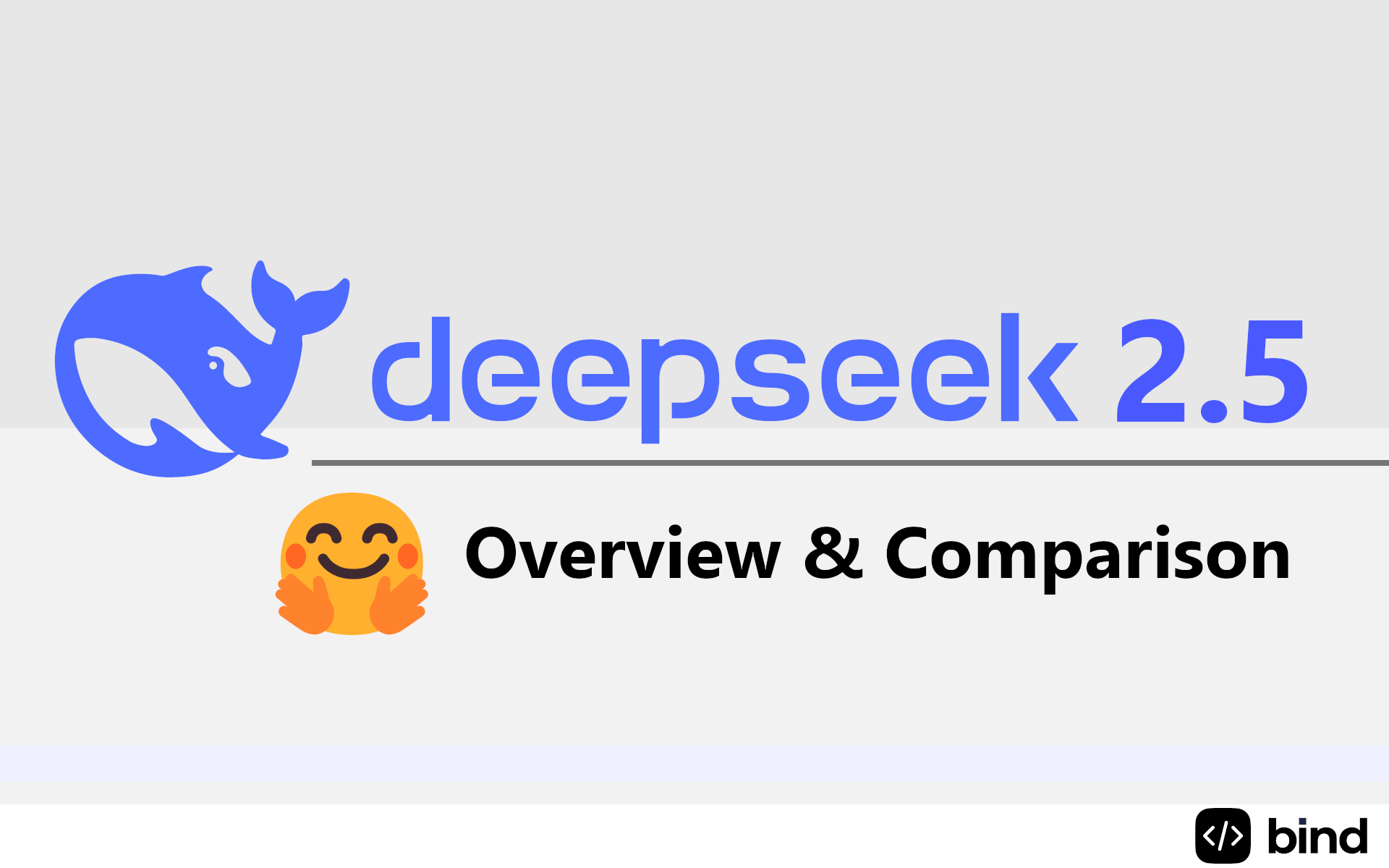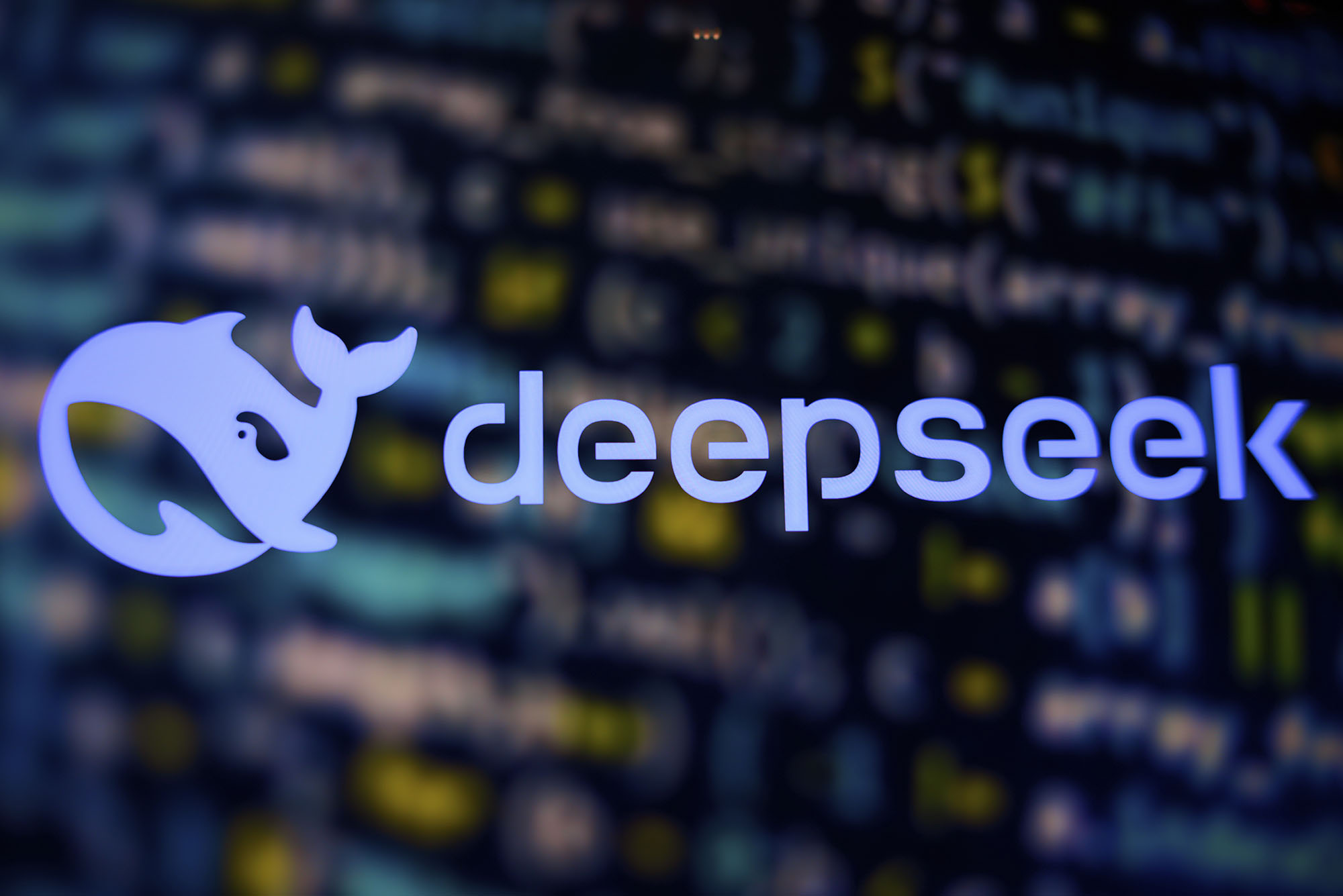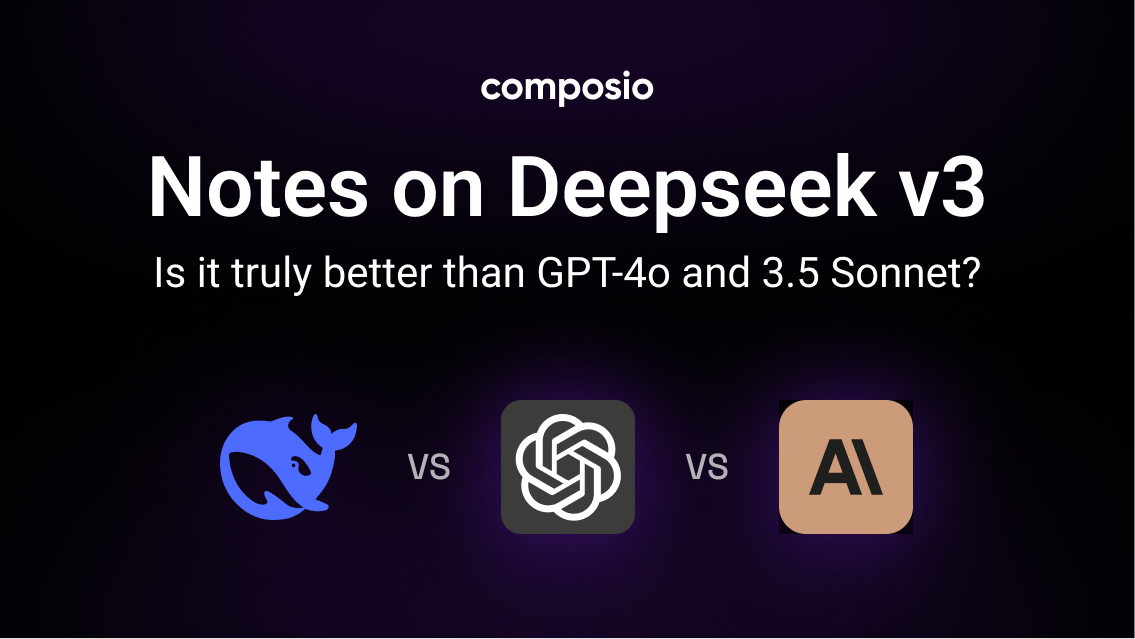
Igbohangout
Add a review FollowOverview
-
Founded Date June 15, 1974
-
Sectors USA
-
Posted Jobs 0
-
Viewed 48
Company Description
Understanding DeepSeek R1

DeepSeek-R1 is an open-source language design built on DeepSeek-V3-Base that’s been making waves in the AI community. Not just does it match-or even surpass-OpenAI’s o1 model in many standards, however it likewise includes fully MIT-licensed weights. This marks it as the very first non-OpenAI/Google design to provide strong reasoning abilities in an open and available way.
What makes DeepSeek-R1 especially exciting is its openness. Unlike the less-open methods from some industry leaders, DeepSeek has actually released a detailed training approach in their paper.
The design is also extremely cost-effective, with input tokens costing just $0.14-0.55 per million (vs o1’s $15) and output tokens at $2.19 per million (vs o1’s $60).
Until ~ GPT-4, the common knowledge was that better designs required more data and calculate. While that’s still legitimate, designs like o1 and R1 show an alternative: inference-time scaling through reasoning.
The Essentials
The DeepSeek-R1 paper provided multiple designs, however main among them were R1 and R1-Zero. Following these are a series of distilled models that, while fascinating, I won’t discuss here.
DeepSeek-R1 uses 2 major ideas:
1. A multi-stage pipeline where a small set of cold-start information kickstarts the design, followed by large-scale RL.
2. Group Relative Policy Optimization (GRPO), a support knowing method that depends on comparing several model outputs per timely to avoid the need for a different critic.
R1 and R1-Zero are both reasoning designs. This basically means they do Chain-of-Thought before responding to. For the R1 series of models, this takes form as thinking within a tag, before answering with a last summary.
R1-Zero vs R1
R1-Zero uses Reinforcement Learning (RL) straight to DeepSeek-V3-Base without any monitored fine-tuning (SFT). RL is utilized to optimize the model’s policy to take full advantage of reward.
R1-Zero attains excellent accuracy however sometimes produces complicated outputs, such as blending several languages in a single response. R1 repairs that by incorporating restricted supervised fine-tuning and multiple RL passes, which enhances both correctness and readability.
It is intriguing how some languages may express certain concepts better, which leads the design to choose the most meaningful language for the job.
Training Pipeline
The training pipeline that DeepSeek published in the R1 paper is immensely interesting. It showcases how they produced such strong thinking models, and what you can anticipate from each phase. This includes the problems that the resulting designs from each phase have, and how they solved it in the next phase.
It’s intriguing that their training pipeline differs from the normal:

The usual training technique: Pretraining on large dataset (train to predict next word) to get the base design → monitored fine-tuning → preference tuning by means of RLHF
R1-Zero: Pretrained → RL
R1: Pretrained → Multistage training pipeline with numerous SFT and RL phases
Cold-Start Fine-Tuning: Fine-tune DeepSeek-V3-Base on a couple of thousand Chain-of-Thought (CoT) samples to guarantee the RL procedure has a decent starting point. This gives a great model to start RL.
First RL Stage: Apply GRPO with rule-based rewards to improve thinking correctness and format (such as forcing chain-of-thought into believing tags). When they were near convergence in the RL process, they moved to the next step. The result of this action is a strong thinking design however with weak basic abilities, e.g., poor formatting and language mixing.
Rejection Sampling + general information: Create new SFT information through rejection tasting on the RL checkpoint (from action 2), combined with monitored information from the DeepSeek-V3-Base design. They gathered around 600k high-quality reasoning samples.
Second Fine-Tuning: Fine-tune DeepSeek-V3-Base again on 800k overall (600k thinking + 200k general tasks) for more comprehensive capabilities. This step led to a strong reasoning design with general abilities.
Second RL Stage: Add more reward signals (helpfulness, harmlessness) to refine the final model, in addition to the thinking rewards. The result is DeepSeek-R1.
They likewise did design distillation for a number of Qwen and Llama models on the reasoning traces to get distilled-R1 designs.
Model distillation is a method where you use an instructor design to enhance a trainee design by creating training data for the trainee model.
The instructor is usually a larger design than the trainee.
Group Relative Policy Optimization (GRPO)
The basic concept behind utilizing reinforcement learning for LLMs is to fine-tune the design’s policy so that it naturally produces more accurate and useful answers.
They used a reward system that checks not only for accuracy however likewise for appropriate formatting and language consistency, so the model gradually learns to prefer reactions that meet these quality requirements.
In this paper, they motivate the R1 design to produce chain-of-thought reasoning through RL training with GRPO.
Rather than adding a different module at reasoning time, the training process itself pushes the model to produce detailed, detailed outputs-making the chain-of-thought an emerging habits of the enhanced policy.
What makes their approach especially intriguing is its reliance on straightforward, rule-based benefit functions.
Instead of depending upon costly external designs or human-graded examples as in standard RLHF, the RL utilized for R1 uses easy requirements: it might give a greater benefit if the answer is proper, if it follows the anticipated/ formatting, and if the language of the response matches that of the prompt.
Not depending on a reward model likewise implies you do not need to hang around and effort training it, and it doesn’t take memory and compute far from your main model.
GRPO was presented in the DeepSeekMath paper. Here’s how GRPO works:
1. For each input prompt, the model generates various reactions.
2. Each action gets a scalar reward based upon factors like precision, formatting, and language consistency.
3. Rewards are changed relative to the group’s performance, essentially measuring how much better each action is compared to the others.
4. The design updates its method a little to favor responses with greater relative advantages. It just makes minor adjustments-using methods like clipping and a KL penalty-to make sure the policy doesn’t wander off too far from its original behavior.
A cool element of GRPO is its versatility. You can utilize easy rule-based benefit functions-for instance, granting a perk when the model properly uses the syntax-to guide the training.
While DeepSeek utilized GRPO, you could utilize alternative approaches rather (PPO or PRIME).
For those aiming to dive deeper, Will Brown has composed rather a good execution of training an LLM with RL utilizing GRPO. GRPO has actually also already been added to the Transformer Reinforcement Learning (TRL) library, which is another great resource.
Finally, Yannic Kilcher has a great video explaining GRPO by going through the DeepSeekMath paper.
Is RL on LLMs the path to AGI?
As a last note on explaining DeepSeek-R1 and the approaches they’ve presented in their paper, I want to highlight a passage from the DeepSeekMath paper, based on a point Yannic Kilcher made in his video.
These findings indicate that RL boosts the design’s overall efficiency by rendering the output circulation more robust, classifieds.ocala-news.com simply put, it appears that the enhancement is credited to improving the right reaction from TopK rather than the enhancement of basic abilities.
To put it simply, RL fine-tuning tends to shape the output circulation so that the highest-probability outputs are more likely to be correct, although the general ability (as measured by the diversity of right responses) is mainly present in the pretrained design.
This suggests that support learning on LLMs is more about refining and “shaping” the existing distribution of actions rather than enhancing the design with entirely brand-new abilities.
Consequently, while RL techniques such as PPO and GRPO can produce substantial efficiency gains, there seems an inherent ceiling determined by the underlying design’s pretrained understanding.
It is uncertain to me how far RL will take us. Perhaps it will be the stepping stone to the next huge turning point. I’m excited to see how it unfolds!
Running DeepSeek-R1

I have actually utilized DeepSeek-R1 via the main chat interface for numerous issues, which it seems to solve well enough. The additional search performance makes it even nicer to use.
Interestingly, o3-mini(-high) was launched as I was composing this post. From my initial testing, smfsimple.com R1 appears stronger at mathematics than o3-mini.
I likewise leased a single H100 through Lambda Labs for $2/h (26 CPU cores, 214.7 GB RAM, 1.1 TB SSD) to run some experiments.
The main goal was to see how the design would perform when deployed on a single H100 GPU-not to thoroughly test the design’s capabilities.
671B via Llama.cpp
DeepSeek-R1 1.58-bit (UD-IQ1_S) quantized model by Unsloth, with a 4-bit quantized KV-cache and partial GPU offloading (29 layers running on the GPU), running by means of llama.cpp:
29 layers appeared to be the sweet spot provided this setup.
Performance:
A r/localllama user explained that they were able to get over 2 tok/sec with DeepSeek R1 671B, without using their GPU on their regional gaming setup.
Digital Spaceport composed a full guide on how to run Deepseek R1 671b completely locally on a $2000 EPYC server, on which you can get ~ 4.25 to 3.5 tokens per second.
As you can see, the tokens/s isn’t quite bearable for any serious work, however it’s fun to run these big designs on available hardware.
What matters most to me is a combination of usefulness and time-to-usefulness in these models. Since reasoning models need to believe before responding to, their time-to-usefulness is usually higher than other models, however their usefulness is likewise typically higher.
We require to both take full advantage of usefulness and lessen time-to-usefulness.
70B through Ollama
70.6 b params, 4-bit KM quantized DeepSeek-R1 running via Ollama:
GPU utilization soars here, as anticipated when compared to the mainly CPU-powered run of 671B that I showcased above.
Resources
DeepSeek-R1: Incentivizing Reasoning Capability in LLMs through Reinforcement Learning
[2402.03300] DeepSeekMath: Pushing the Limits of Mathematical Reasoning in Open Language Models
DeepSeek R1 – Notion (Building a completely local “deep scientist” with DeepSeek-R1 – YouTube).
DeepSeek R1’s recipe to replicate o1 and the future of thinking LMs.
The Illustrated DeepSeek-R1 – by Jay Alammar.
Explainer: What’s R1 & Everything Else? – Tim Kellogg.
DeepSeek R1 Explained to your granny – YouTube
DeepSeek
– Try R1 at chat.deepseek.com.
GitHub – deepseek-ai/DeepSeek-R 1.
deepseek-ai/Janus-Pro -7 B · Hugging Face (January 2025): Janus-Pro is an unique autoregressive structure that combines multimodal understanding and generation. It can both understand and create images.
DeepSeek-R1: Incentivizing Reasoning Capability in Large Language Models by means of Reinforcement Learning (January 2025) This paper introduces DeepSeek-R1, an open-source reasoning model that matches the efficiency of OpenAI’s o1. It presents a detailed approach for training such designs utilizing massive support knowing techniques.
DeepSeek-V3 Technical Report (December 2024) This report goes over the application of an FP8 mixed accuracy training structure validated on an incredibly large-scale model, attaining both accelerated training and lowered GPU memory usage.
DeepSeek LLM: Scaling Open-Source Language Models with Longtermism (January 2024) This paper looks into scaling laws and provides findings that help with the scaling of large-scale models in open-source configurations. It presents the DeepSeek LLM project, dedicated to advancing open-source language models with a long-term perspective.
DeepSeek-Coder: When the Large Language Model Meets Programming-The Rise of Code Intelligence (January 2024) This research study presents the DeepSeek-Coder series, a range of open-source code models trained from scratch on 2 trillion tokens. The models are pre-trained on a premium project-level code corpus and utilize a fill-in-the-blank job to enhance code generation and infilling.
DeepSeek-V2: A Strong, Economical, and Efficient Mixture-of-Experts Language Model (May 2024) This paper presents DeepSeek-V2, a Mixture-of-Experts (MoE) language model identified by affordable training and efficient inference.
DeepSeek-Coder-V2: Breaking the Barrier of Closed-Source Models in Code Intelligence (June 2024) This research study presents DeepSeek-Coder-V2, an open-source Mixture-of-Experts (MoE) code language model that attains efficiency comparable to GPT-4 Turbo in code-specific jobs.
Interesting occasions

– Hong Kong University replicates R1 results (Jan 25, ’25).
– Huggingface announces huggingface/open-r 1: Fully open recreation of DeepSeek-R1 to duplicate R1, fully open source (Jan 25, ’25).
– OpenAI scientist verifies the DeepSeek team independently discovered and used some core ideas the OpenAI group utilized on the way to o1
Liked this post? Join the newsletter.
